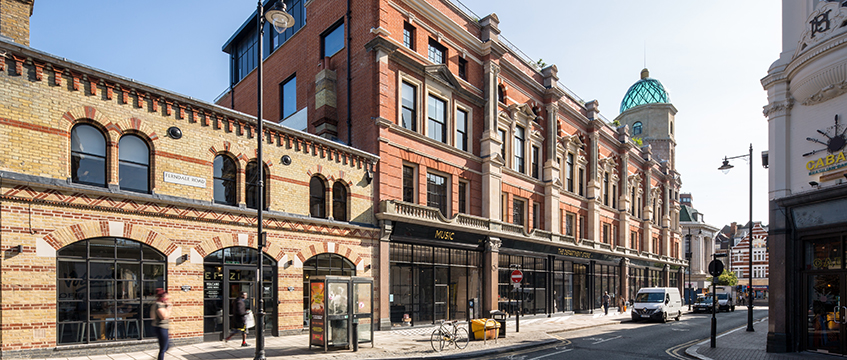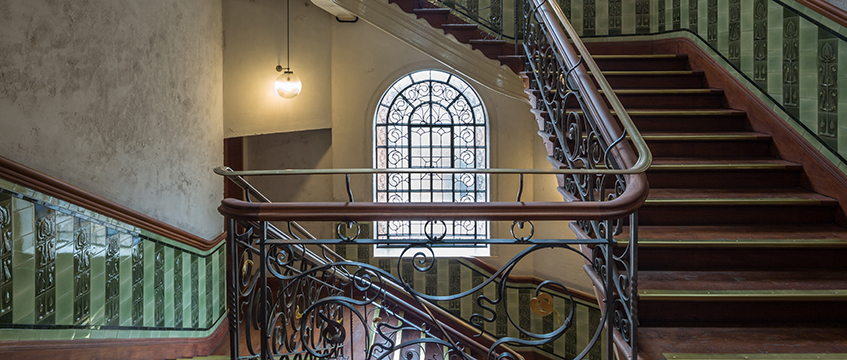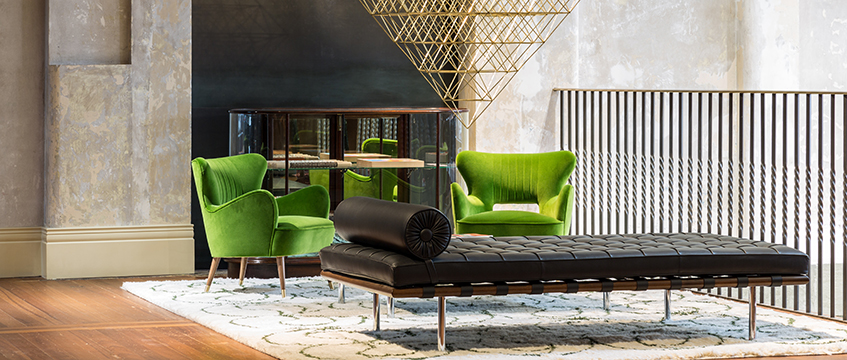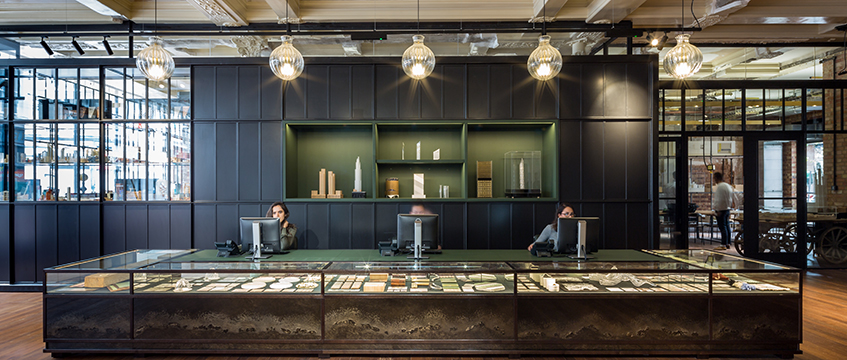When Google and Facebook moved to King’s Cross, Squire & Partners moved to Brixton, SW9. With other creative companies likely to follow suit, architect Michael Squire explains what was behind the firm’s move to The Department Store.
Why we chose to move the firm to Brixton from King’s Cross
Squire & Partners was located in King’s Cross for almost 15 years and during that time office rents in the area had more than doubled.
Initially, we were insulated from this problem by owning our own premises but, as we grew, we needed to look for additional accommodation and became aware of the dramatic increase.
We decided to rent our space there and look for accommodation that could provide for future growth at costs we could afford. We focussed our search on the Victoria line, which has an excellent service connected to virtually all other London Underground lines.
When Brixton was suggested, our immediate response wasn’t positive in terms of office location, but when we saw the building and explored the location further, we realised it had enormous potential.
In addition to the Victoria line, Brixton is part of the London Overground rail network and connects to countless bus routes. The area has a welcoming and generous community spirit, along with a plethora of independent retail and food outlets in the high street, Brixton Village Market and Pop Brixton.
For us, it has the perfect combination of useful amenities and a lively creative cultural scene that serves people who live and work in the area.
The building we purchased was constructed in 1906 as an extension (connected by tunnels) to the adjacent Bon Marché, the first purpose-built department store in the UK.

After the store ceased trading in the 1950s, the building was let to a government department and subsequently left vacant and used as a squat for several years.
As we slowly removed the layers of institutional mineral-fibred ceilings and laminate floors, we revealed grand plastered ceilings, teak parquet floors and rich Edwardian detailing that had been severely damaged in the intervening years. The potential cost of repairing the damage and restoring the building was daunting, but we began to embrace its decayed decadence.
Our journey to create The Department Store was guided by a constant search for the layers of history within the building and a desire to reveal them. Many times we wondered if we really wanted to keep the original graffiti skeleton but thankfully we did.
The process was time-consuming but not extravagant. We kept the existing heating system and its cast iron radiators, we have windows that open if we need air and “fridges” on the ceiling to meet the occasional need for cooling.
Many of our spaces work twice for us, such as our seminar space in the basement which becomes a locally used events space in the evenings and weekends, connecting us to the community.
In addition, our rooftop staff cafeteria and social space, which provides excellent £3 subsidised lunches during the week, becomes a profitable and popular local members’ bar/restaurant in the evenings and weekends.
What affect the move has had on the business
The most significant benefit of our building is the asset it has proved to be in attracting talented staff to the practice. We have twice the amount of space we had in King’s Cross, with the same amount of net outgoings – providing we successfully fix our interest rate.
An added benefit has been seeing how many of our clients love the building and now recognise the practice as a design-led firm with sound commercial judgment, rather than the reverse.

How the company has engaged with the local community
When we took the decision to move to Brixton, we were aware of the resistance from some locals to the perceived threat of “gentrification”.
From the start we were determined to engage with local people across a wide spectrum.
We had the advantage that we were reviving an existing landmark that created employment, as opposed to “yuppie flats”, and bringing more than 200 people to Brixton to enhance the local economy during the day, rather than simply use the town as a dormitory at night.
We also sought specific engagement long before our arrival, leading the charge for the fledgling Brixton Design Trail to become a District of the London Design Festival, becoming involved in local design projects and supporting community organisations. The development of The Department Store included a small number of retail units and we worked hard to host a variety of local businesses, including a community post office, coffee roastery, delicatessen and vinyl shop.
How we see development in the Brixton area evolving
Brixton has the advantages of locations such as Shoreditch and Hoxton, where incremental development creates successful regeneration within the existing physical and social fabric.
Major regeneration projects, such as at King’s Cross, can sometimes be too radical.
To many people, Brixton is more about nightlife than offices, but it has all the ingredients for a successful commercial location, and I have no doubt that, just like The Department Store, local buildings will be regenerated incrementally to bring ever-growing vitality to the area.

To send feedback, e-mail Louisa.Clarence-Smith@egi.co.uk or tweet @LouisaClarence or @estatesgazette











